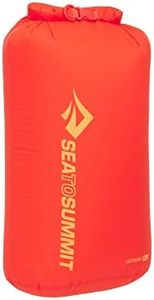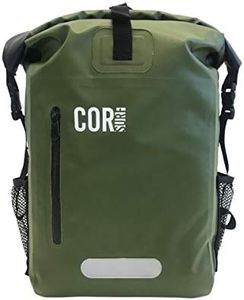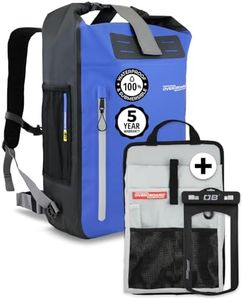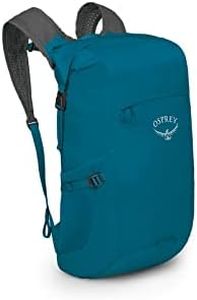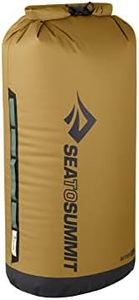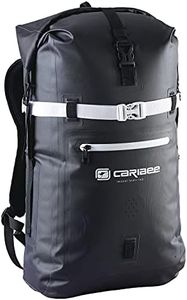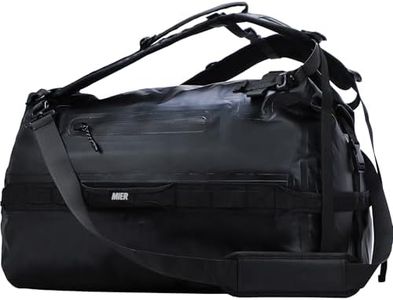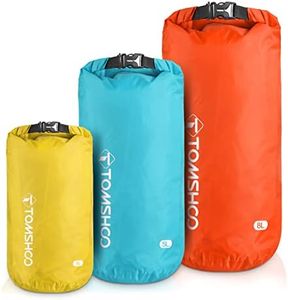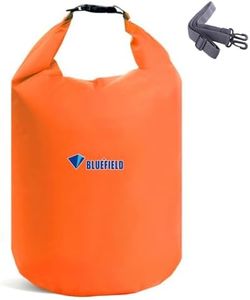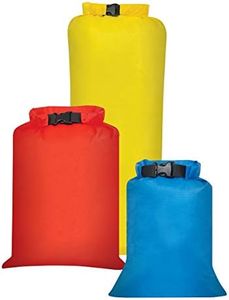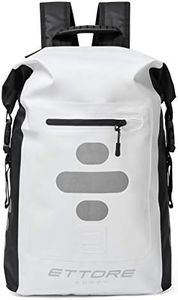We Use CookiesWe use cookies to enhance the security, performance,
functionality and for analytical and promotional activities. By continuing to browse this site you
are agreeing to our privacy policy
10 Best Waterproof Dry Bags
From leading brands and best sellers available on the web.Buying Guide for the Best Waterproof Dry Bags
Selecting the right waterproof dry bag is important, especially if you enjoy outdoor activities like kayaking, hiking, camping, or going to the beach. Dry bags keep your valuables, clothes, electronics, and food safe from water, dirt, and sand. When choosing a dry bag, think about your activities, the amount of gear you need to protect, and how comfortable you want to be when carrying the bag. Pay attention to key features that determine the durability and functionality of the bag.Capacity (Volume)Capacity refers to how much the dry bag can hold, usually measured in liters. This is one of the most important factors because it determines what and how much you can carry. Smaller bags (5-10 liters) are great for protecting just your essentials like a phone, wallet, or a small first-aid kit. Medium-sized bags (15-30 liters) work well for day trips and can fit clothes, snacks, and a few extra items. Large bags (over 30 liters) are suitable for longer trips or if you’re packing for multiple people. To pick the right size, think about what you need to keep dry and how long your adventure will last.
Material QualityThe material of the dry bag affects how well it keeps water out and how long it lasts. Most dry bags are made from either nylon or PVC (vinyl). Nylon is usually lighter and more flexible, making it good for hiking and regular use, while PVC is heavier but more rugged and often more waterproof, ideal for harsher conditions. Look for material thickness, often stated in denier (D) or millimeters (mm), with higher numbers offering better durability. Choose the material based on your activity: lighter bags for backpacking and heavier, tougher bags for water sports or rough use.
Closure TypeThe closure system is what seals the dry bag and keeps water out. The roll-top closure is the most common, where you roll down the top several times and buckle it to create a tight seal. This type is reliable and easy to use. Some bags have zip-lock or zipper closures, which can be even more waterproof but need to be checked regularly for dirt or wear. Roll-tops are best for general use, while zipper closures are better for absolute waterproofing – for example, if you plan on submerging the bag. Think about where and how you’ll use the bag to decide which closure fits best.
Straps and Carrying OptionsHow you carry your dry bag matters, especially if you’ll be moving around a lot. Some dry bags have just a single handle, making them easy to grab, while others come with one or two shoulder straps, more like a backpack, which is much more comfortable for long distances. If you’ll be paddling, walking, or hiking with your bag, padded or adjustable straps help keep you comfortable. If you just need to toss the bag on a boat, simple handles are fine. Think about your activity and how far you’ll have to carry the bag to decide what carrying option works best for you.
Waterproof RatingNot all dry bags offer the same level of waterproof protection. Some are just splash-proof, which is good for drizzle or occasional splashes but won’t prevent water from entering if fully submerged. Others are fully waterproof and will keep water out even if dropped in a river. If you need to submerge your bag frequently, like when kayaking or during river crossings, look for bags with higher waterproof ratings, often indicated by terms like 'IPX7' or 'IPX8.' For general use where only rain or splashes are expected, a lower rating is usually enough.
Durability and SeamsDurability depends on not just the material, but also on how the bag is put together. Look for bags with reinforced or welded seams rather than stitched ones, as these prevent water from seeping in through the seams and make the bag stronger. If you plan to use your dry bag in rocky or demanding environments, choose one advertised for its tough build. Think about how rough you’ll be with the bag to guide your choice.
